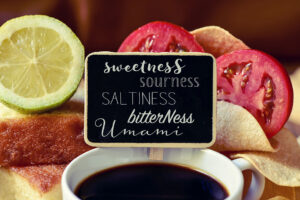Unlocking the Full Potential of Cooking with Wine
Adding wine to your cooking is primarily about elevating flavors and enriching the taste profile of your dishes.
Choosing the Right Wine: Quality Matters More Than Price
When incorporating wine into your recipes, one cardinal rule should guide you: always opt for a wine that tastes good to you. This doesn’t necessarily mean selecting an expensive bottle but rather choosing a wine you enjoy drinking. Both quality and price aren’t inherently linked in cooking wines; since alcohol and water evaporate during cooking, what remains is the concentrated essence and unique taste of the wine. Therefore, selecting a wine with favorable flavor characteristics is crucial for the success of your dish.
Picking the perfect wine for cooking can feel as intricate as choosing one to accompany a meal. However, with some trial and error, you’ll quickly learn which varieties complement your culinary style and how they enhance your cooking.
Recommended Tools for Wine Enthusiasts
To simplify the wine experience in your kitchen, consider investing in a specialized wine tool kit. These kits typically include devices to easily open, serve, and preserve wine, ensuring effortless use both for drinking and cooking.
Why Prefer Dry Wines for Cooking?
Dry wines are generally favored when cooking because they contribute balanced acidity and subtle complexity without imparting excessive sweetness. Dryness means that nearly all the sugar has fermented into alcohol, which gives these wines their crisp, tangy flavor ideal for savory dishes.
When selecting reds, opt for young, dry, and full-bodied options such as Pinot Noir, Chianti, Cabernet Sauvignon, or California Mountain Red wines. For whites, dry and rich-bodied wines work best, though some dry whites can be thin or overly tart – so don’t hesitate to experiment and adjust based on your taste preferences.
Exploring the Richness of Fortified Wines in Cooking
Fortified wines like vermouth are fantastic additions to the kitchen because they bring complex herbal and spice notes, enhancing savory dishes beautifully. Others such as sherry and port are sweeter fortified wines, commonly paired with fruit dishes or desserts. Keep in mind that fortified wines are more concentrated in flavor, so use them sparingly and taste as you go to avoid overpowering your recipe.
Integrating Wine Into Your Culinary Process
Wine’s versatility can be harnessed in three main ways: as a cooking liquid, a marinade base, or a finishing ingredient to impart final flavor nuances. Not every meal benefits from wine, so it’s important to introduce it only when its flavor will genuinely enhance the dish.
The easiest approach is to grab a wine you enjoy from the store for cooking purposes. Large-format bottles of red or white wine can work but may spoil if left unused for long. Recently, vacuum-sealed boxed wines have become popular for cooking because they maintain freshness after opening and allow you to use small amounts as needed. Fortified wines also have the advantage of longer shelf life once opened.
Avoid using commercial “cooking wines” found on shelves, which are often loaded with high sodium content and inferior flavor profiles. If you wouldn’t drink it, don’t cook with it.
Recipe Inspiration: Cooking with Wine
Pan-Roasted Orange Roughy with Tomato and Vermouth Sauce
- 2-3 peeled, seeded, and chopped tomatoes
- 2 minced shallots
- 2 tablespoons fresh chopped parsley
- ½ teaspoon salt
- Black pepper, to taste
- 1½ pounds orange roughy fillets
- ¾ cup dry white vermouth
- ¼ cup water or clam juice
- 2 tablespoons melted butter
- 2 tablespoons flour
- ½ teaspoon sugar
- 3-4 tablespoons whipping cream
Begin by combining tomatoes, shallots, parsley, salt, and pepper at the bottom of an oven-safe skillet. Place the fish fillets atop the mixture, pour in vermouth and water or clam juice, and gently bring to a simmer over medium heat. Cover the skillet with a lid or foil before transferring it to a preheated 375°F oven. Cook for 13 to 15 minutes until the fish becomes opaque. Remove the fish and keep warm. Boil down the cooking liquid on high heat until reduced by half. Blend butter and flour into a paste and whisk into the sauce, cooking over medium heat until thickened. Stir in sugar, cream, and any juices from the fish. Serve the rich sauce poured over the fillets.
Refreshing Fruit Salad Enhanced with Muscat Wine
- 1 cup sliced strawberries
- 1 cup diced mango
- 1 cup diced honeydew melon
- ½ cup fresh blueberries
- ½ cup pineapple chunks (canned)
Dressing:
- ¼ cup Muscat wine
- 1 tablespoon brown sugar
- 1 tablespoon honey
- ½ teaspoon finely grated orange zest
- Fresh mint leaves for garnish
Toss all fruit ingredients together in a large bowl. In a separate small bowl, whisk the Muscat wine, brown sugar, honey, and orange zest until the sugar dissolves. Pour the dressing over the fruit and let it chill for at least 30 minutes to allow flavors to meld. Garnish with mint leaves before serving.
The Art of Cooking with Wine: A Culinary Journey
Cooking with wine not only infuses your dishes with unparalleled aroma and depth but also enhances your cooking experience. As the fragrance unfolds, savoring a sip alongside your preparation makes the entire process more pleasurable. For aspiring gourmet cooks, mastering the use of wine in the kitchen is an indispensable skill that transforms everyday meals into memorable feasts.





